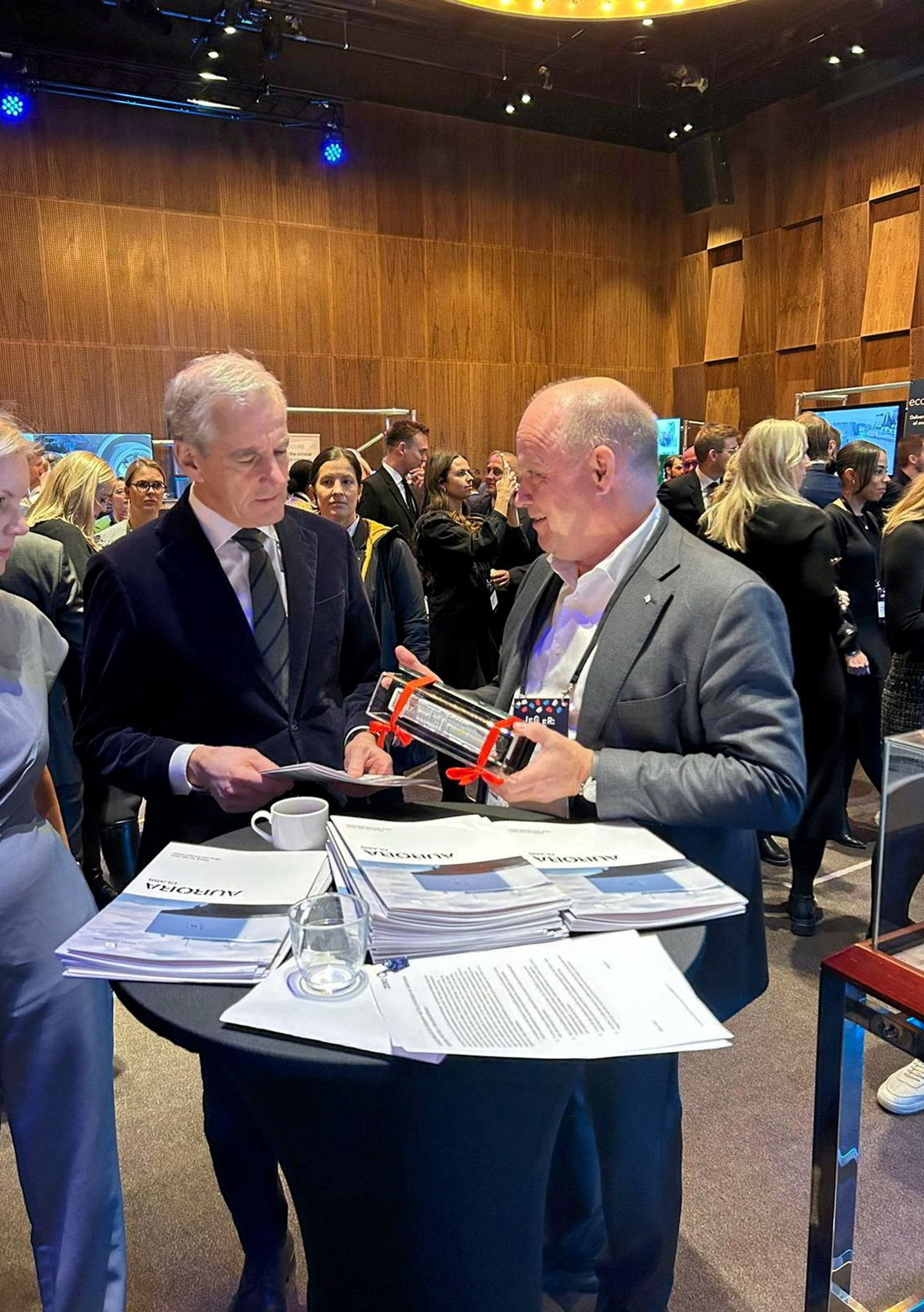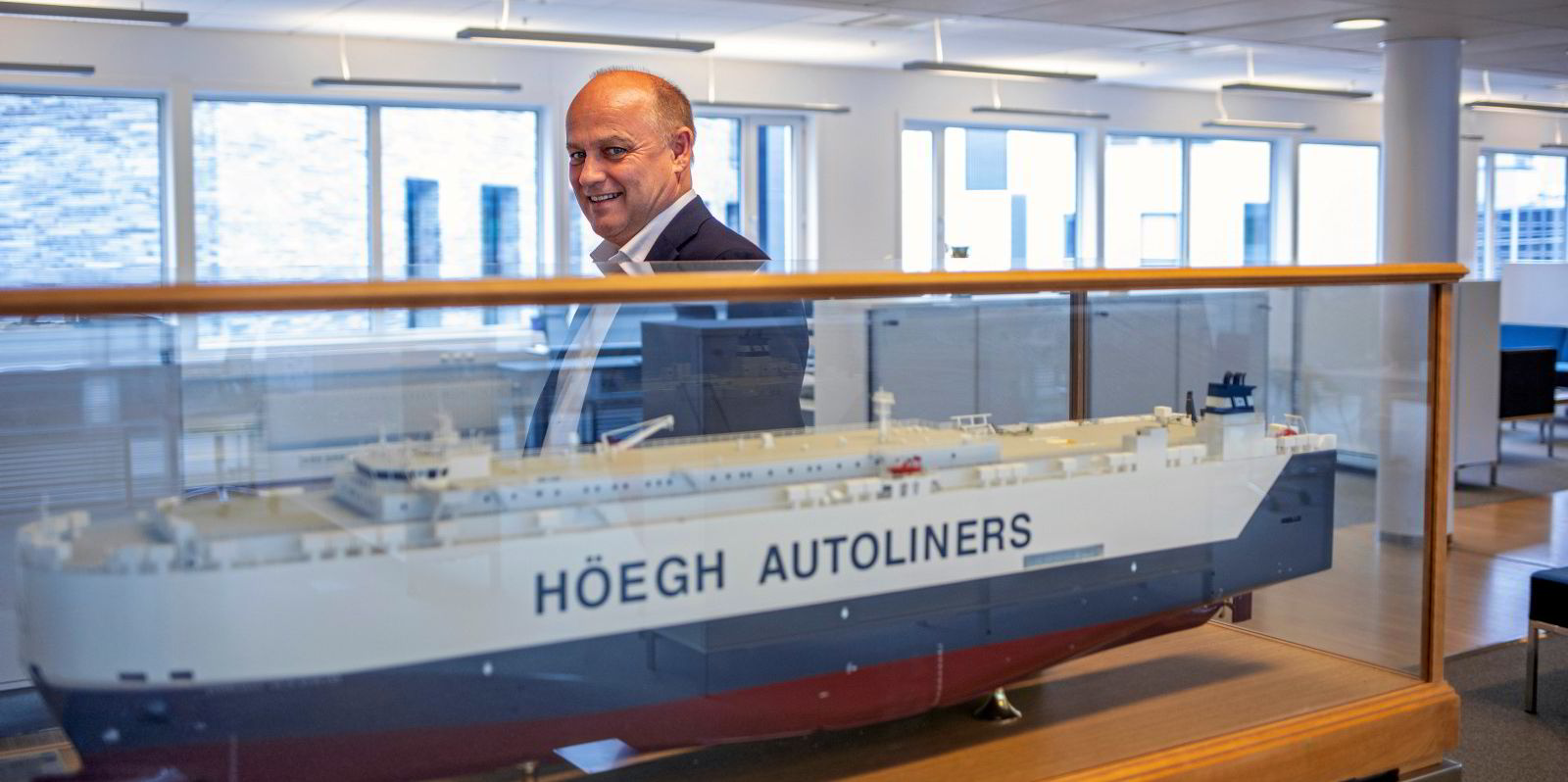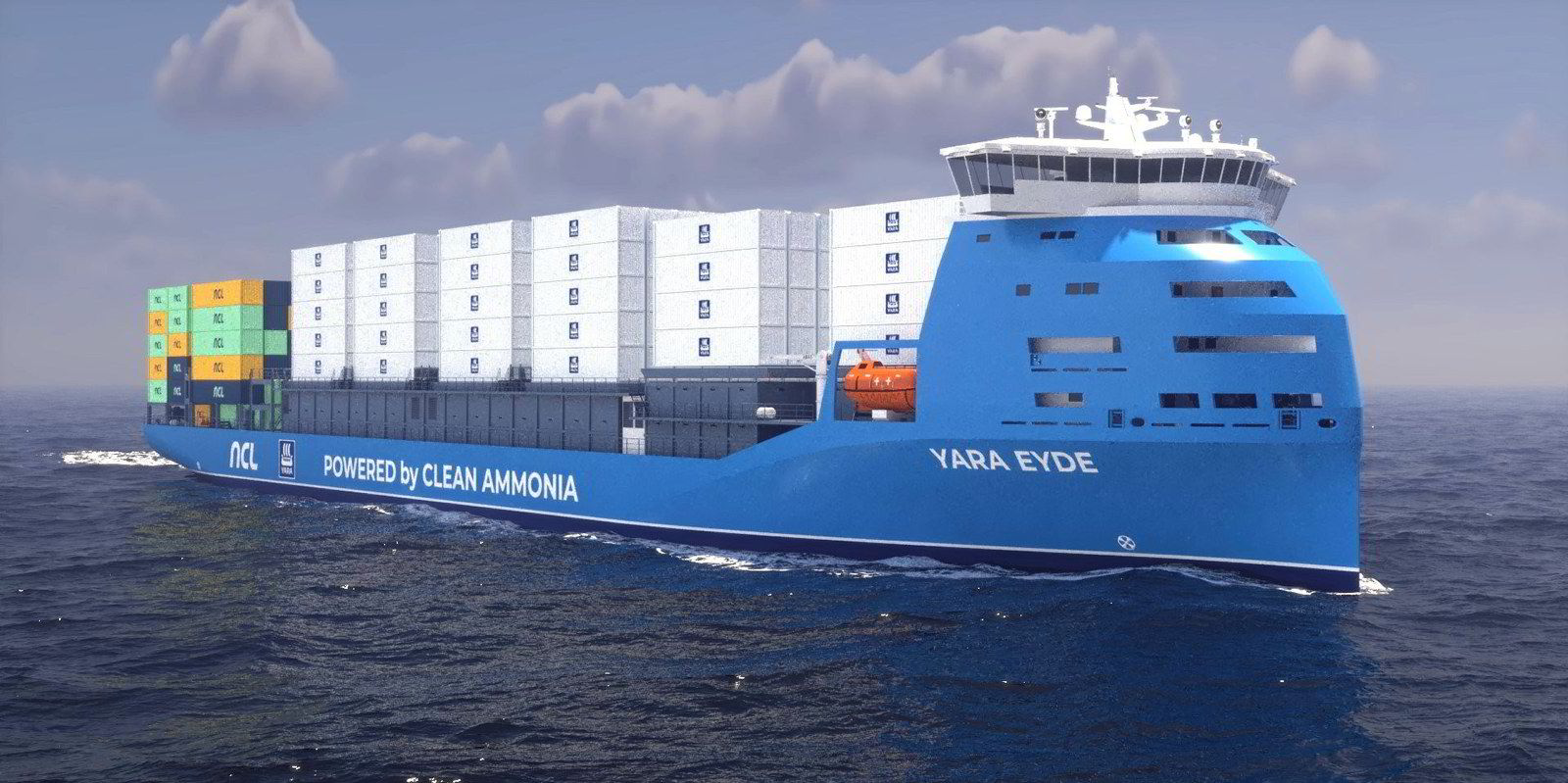Hoegh Autoliners’ 12 newbuildings will be able to run on many different fuels, but the goal is to have them all running on ammonia, company chief executive Andreas Enger said after announcing a new tie-up with Yara International.
The Oslo-listed car carrier operator signed a deal to build new car carriers as it looked to overhaul its fleet.
The first four will be delivered as dual-fuel but ready to use others, Enger said. They will be delivered from 2024. The last four, he told TradeWinds, will be built with the capability to use ammonia from delivery. They will all be delivered by 2027.
The vessels are being constructed in China and will have MAN Energy Solutions two-stroke engines on board.
With deliveries set to start soon, the company is keen to finalise offtake agreements. This latest agreement with Yara gives no details on volumes, but Enger said it is one of “four or five” such discussions the shipowner is having with producers of green and blue ammonia.
“We have signed letters of intent with multiple potential producers of ammonia, and those are intentions,” he said.
“These are projects that are not yet there, and what we are trying to do now is basically firm this up, to get closer to physical supply, because the agreements we have had so far are agreements to work together to see what’s possible.”

He went on to add that the fuel deals are becoming more important because of the need to resolve fuel safety and engine availability in the coming years.
“The objections we hear from ammonia is, first, it’s not safe, then that there is no fuel. Then there are no engines,” added Enger.
“I think we’ve been working with Yara for a while, understanding safety, they have worked with this stuff for a long time, and we are now getting traction on the engines, so we want to secure the fuel to be able to firm up that story that it is the most scalable and most competitive long-term zero carbon fuel in our view.”
So while these 12 newbuildings could have a multi-fuel start, the company remains steadfast in looking to ammonia for its future.
Yara chief executive Svein Tore Holsether said the move by Hoegh Autoliners to secure ammonia deals is welcome, even if he understands the current decisions to not immediately select a fuel as the company positions itself for a transition.
He also pointed to the existing infrastructure for grey ammonia globally and how this can be easily utilised as green and blue ammonia is produced either as an energy source, or for the increased volumes of green fertiliser that will be needed.
“This is why we joined the First Movers Coalition, with Hoegh Autoliners being part of it as well, with the US State Department, with John Kerry [and with] the World Economic Forum,” he added.
“We are very clear that the only way to get this done now is full value chains and to create scale, and we have the leading companies in the world to show what’s possible. So this is a great example of what is happening now.”
While the deal agreement between Hoegh Autoliners and Yara focuses on blue ammonia, Yara is also a significant investor in green hydrogen, a key ingredient for generating green ammonia.
Blue ammonia will be made with fossil fuels, notably natural gas, with the hydrogen being split from the gas and the resulting CO2 emissions needing to be captured and either stored or reused. Yara is also investing in carbon capture and storage both in Norway and in at least two ammonia production facilities in the US.






